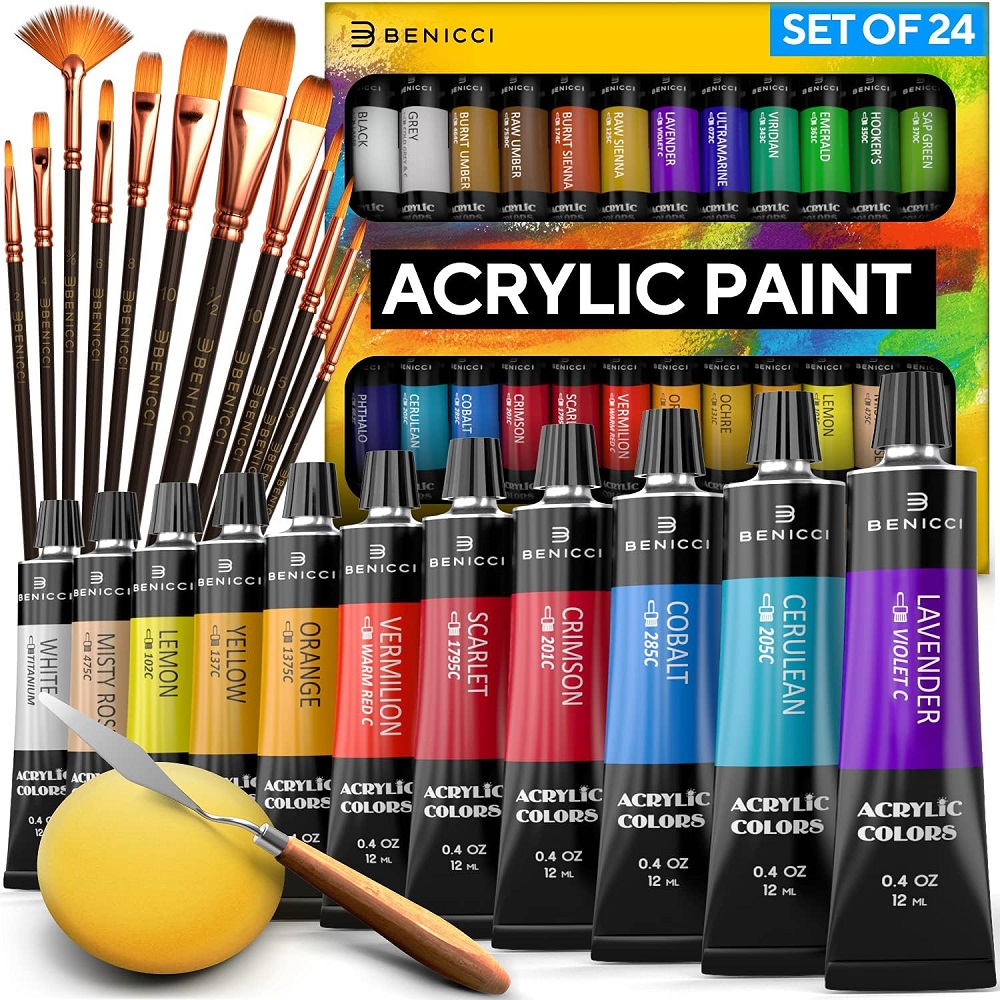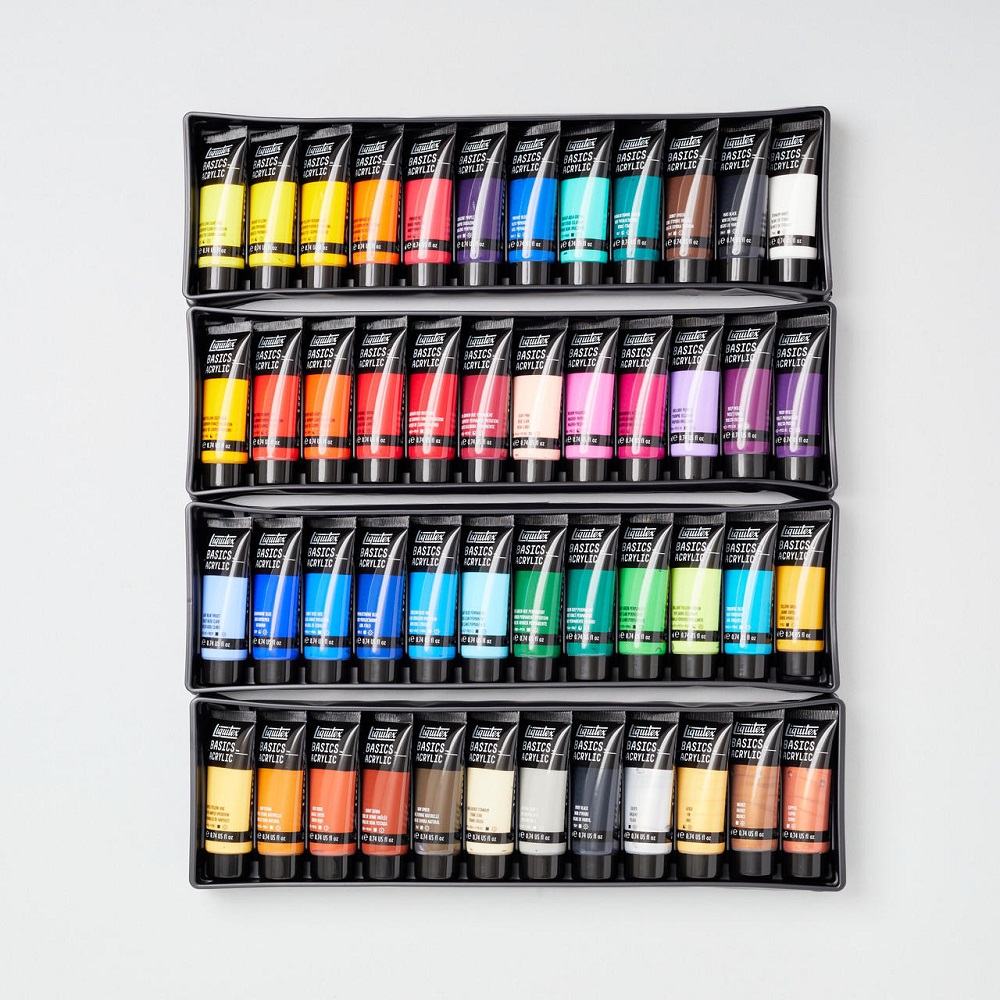Acrylic paint has gained immense popularity due to its versatility, vibrant colors, and quick-drying properties. Artists love it for canvas work, crafts, and even body art. However, many individuals wonder if they can use acrylic paint on their skin for body art, face painting, or temporary tattoos. This article will explore the safety aspects and considerations of using acrylic paint on skin, providing insights into potential risks, suitable alternatives, and best practices for anyone considering body art.
Understanding Acrylic Paint
What is Acrylic Paint?
Acrylic paint consists of pigment suspended in an acrylic polymer emulsion. It dries quickly and can be thinned with water or used in its thick form. Artists appreciate acrylic paint because it blends easily and provides a range of textures—from thin washes to thick impasto techniques. These properties make it a favorite medium for both professional artists and hobbyists in various art forms.
Yet, despite its popularity, it’s essential to recognize that acrylic paint is formulated for use on non-porous surfaces, such as canvas, wood, and paper. This raises important questions about its safety and suitability when applied to skin, which has different properties than these materials.
Common Uses of Acrylic Paint
Acrylics are widely used in painting and other artistic applications. Artists employ these paints for creating brilliant artwork, murals, and sculptures. Crafters also utilize acrylics in DIY projects, home decor, and even fabric painting. Some people might consider using acrylic paint on skin for face painting at parties or special events.
While acrylics are accessible and convenient, their intended use is not for body application. Understanding the specific formulation and purpose of acrylic paints can help clarify why they may not be safe for skin contact.

Safety Concerns with Acrylic Paint on Skin
Potential Skin Reactions
Using acrylic paint on skin can lead to various safety concerns. One primary issue is that acrylics contain different chemicals and additives that aren’t meant for skin application. These ingredients might cause skin irritation, rashes, or allergic reactions upon contact. Symptoms could include redness, itching, or swelling, which can be uncomfortable and painful.
Individuals with sensitive skin, allergies, or underlying skin conditions may be more prone to experiencing adverse reactions. Even those without known sensitivities should approach using acrylic paint on skin with caution. It’s vital to consider the risks involved before applying any non-cosmetic products to your body.
Removal Challenges
Acrylic paint is designed to adhere strongly to surfaces, and this quality can make removal from skin difficult. While water can thin acrylics and allow easy paint application, once it dries, it becomes more stubborn. Using harsh soaps or solvents to remove paint can further irritate the skin and lead to more significant issues. Difficulty removing paint can result in prolonged exposure of the skin to potentially harmful substances.
When considering body art, it’s important to think about the feasibility of both application and removal. The potential hassle of removing acrylic paint can diminish the enjoyment of the experience as well as impact safety.
Alternatives to Acrylic Paint for Skin Use
Body Paint
If you want to create art directly on skin, explore products specifically designed for body application. Body paints provide vibrant colors and are formulated to be safe for skin contact. These paints often undergo rigorous testing to ensure they won’t cause damage or harm when applied directly to the skin.
Look for FDA-approved or cosmetic-grade body paints that are easy to wash off with soap and water. These products are available in various colors and finishes, allowing you to match the same creative possibilities that acrylic paint offers without the associated risks.
Face Paint
Similarly, face paints are ideal for events such as parties, festivals, or performances. Professional-grade face paints often consist of safe, non-toxic ingredients formulated to sit comfortably on the skin. They usually allow for smooth application and vibrant colors, creating stunning designs while maintaining safety.
When shopping for face paints, prioritize reputable brands known for their safety standards. Always check for allergy warnings and confirm that the product is suitable for the intended age group, particularly if applying makeup on children.

Best Practices for Body Art with Safe Products
Performing a Patch Test
Regardless of the product you choose, performing a patch test is crucial before applying any paint to larger areas of skin. This step helps identify potential allergies or adverse reactions. Choose a small, inconspicuous area to apply the paint, allowing 24 hours for the skin to react.
If no irritation occurs, you can proceed with the application. However, if you notice any discomfort or unusual changes in the skin, do not use that product. Even products marketed as safe can cause reactions in sensitive individuals, and testing is a small yet impactful step toward ensuring safety.
Application Techniques
When applying body or face paint, consider using high-quality brushes, sponges, or applicators specifically designed for cosmetics. These tools can evenly distribute the paint, providing better coverage and helping you achieve the desired effects. Ensure the applicators are clean and sanitized to reduce the risk of infections or skin irritations.
Be aware of applying paint near sensitive areas, such as the eyes or mouth, and use products specifically tested for those areas. Following the manufacturer’s instructions will ensure safe use and the best results during your body art sessions.
Special Considerations for Children
Safety for Young Skin
When applying body or face paint on children, safety must be the top priority. Children have more sensitive skin, making them more susceptible to reactions. Therefore, choosing hypoallergenic paints and verifying suitability for sensitive skin types is crucial.
Many manufacturers create products explicitly designed for children, ensuring that they are safe for play and fun activities. Checking labels and product ratings can help parents select the safest and best choices for their kids.
Engaging Children in the Process
Getting children involved in choosing colors and designs can make face painting a fun and memorable experience. However, always supervise the process to ensure that they do not attempt to use paints not meant for skin. Moreover, demonstrate proper cleaning techniques after the face painting session, emphasizing the importance of removing paint gently to protect their skin.
Establishing these good practices early can foster a love for creative activities while prioritizing safety. Teaching kids about the importance of using safe products empowers them to make informed decisions as they express their artistic side.

Addressing Common Misconceptions
“It’s Just Paint; It Can’t Hurt Me”
One common misconception some may have is that using paint on skin seems harmless, especially if results look good initially. However, the phrase “it’s just paint” ignores the chemical composition and the potential risks involved. Misunderstanding the difference between paint formulated for surfaces and what’s safe for skin can lead to harmful experiences.
While temporary body art can be tempting, consider safety and the product’s intended use before applying anything to your skin. This practice is crucial in ensuring that your creative explorations don’t lead to unpleasant consequences.
Using Craft Paint as an Alternative
Some individuals might consider various types of craft paint instead of acrylics, believing these to be safer. However, craft paints often contain similar chemical components as acrylic paints and can produce comparable reactions. Just like with acrylic paints, you may experience irritation, difficulty removing the paint, or other adverse effects on the skin.
Ultimately, whenever exploring body art, don’t make assumptions about safety based on a paint’s application or purpose. It’s wise to rely on product labeling and recommendations from trusted sources regarding body-safe options.
Prioritizing Safety in Body Art
Enjoying Face and Body Paint Safely
Using acrylic paint on skin raises significant health and safety concerns that shouldn’t be overlooked. While it may appear tempting to explore this creative avenue with readily available materials, the risks associated with inappropriate products can lead to unsafe consequences. Prioritizing safety ensures that the joy of art doesn’t come at the cost of your health.
Options for Safe Creativity
When engaging in face painting or body art, opt for products specifically designed for safe skin application. Paints and body art supplies formulated with skin in mind provide exciting opportunities for creative expression while also safeguarding against potential harm. Following best practices for application, performing patch tests, and using high-quality, tested products will allow you to explore your artistic side without compromising your health.
Understanding the essential distinctions between different types of paints and their intended purposes can guide you toward safer decisions. By prioritizing safety in your creative endeavors, you can enjoy vibrant, beautiful designs on skin while promoting health and well-being in all your artistic expressions.